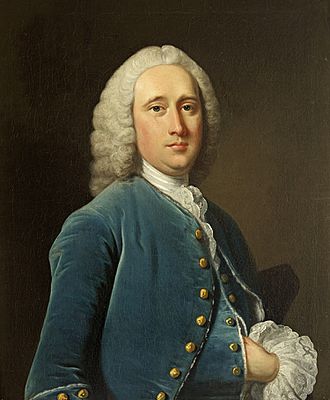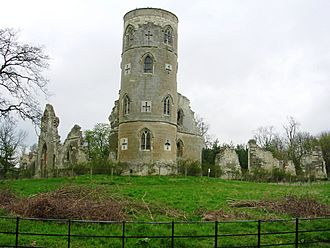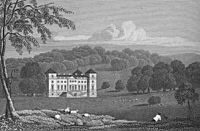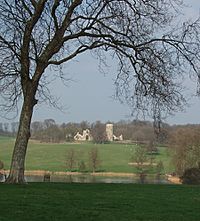Sanderson Miller facts for kids
Sanderson Miller (born 1716 – died 1780) was an English architect and garden designer. He was one of the first people to bring back the Gothic style in buildings. He was also known for adding special, often playful, buildings called follies to large gardens. These follies were usually designed to look old or ruined, making the gardens more interesting and beautiful.
Contents
Early Life and First Designs
Sanderson Miller was born and lived his whole life in a place called Radway in Warwickshire, England. His father, who was also named Sanderson Miller, was a successful wool merchant. He bought the Radway estate in 1712.
When Miller was 15, he was already very interested in old things and history. He studied at St Mary Hall, Oxford and learned even more about England's past. When he was 21, he inherited his family's home, Radway Grange.
Radway Grange's Gothic Makeover
A few years after inheriting Radway Grange, Miller started to change his Elizabethan house. He redesigned it to look like a Gothic building. This was a new and exciting style at the time.
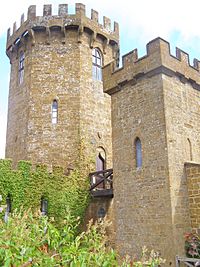
He also added interesting features to the gardens. One was a small cottage with a thatched roof. Another was an eight-sided tower, much like the famous Guy's Tower at Warwick Castle. This tower looked old and medieval. It was even built on a spot linked to King Charles I and the Battle of Edgehill.
Famous Projects and Buildings
Miller's work at Radway Grange made him well-known as a gentleman architect. This meant he designed buildings as a hobby, not as his main job. He had many friends in high places, especially through his supporter, George Lyttelton, 1st Baron Lyttelton. This led to many requests for his designs.
Designing for Others
While Miller sometimes designed buildings in a classical style, like the Shire Hall in Warwick, he is most famous for his Gothic Revival work. He designed parts of Albury Hall in Oxfordshire and the Great Hall at Lacock Abbey.
He was especially good at creating "mock ruined castles." These were buildings that looked like old, crumbling castles but were actually new. He built these at places like Hagley Hall, Wimpole Hall, and Ingestre Hall. Sadly, the one at Ingestre Hall is no longer there.
Other places Miller helped design include Farnborough Hall, Wroxton Abbey, Upton House, and Sham Castle. He also worked on parts of Siston Court and Tudor Court at Hanworth Park.
Family Life
Sanderson Miller married Susanna Trotman. They had six children together. Their names were Fiennes, Charles, Susanna, Mary, Hester, and Anna.
Images for kids
-
Lacock Abbey, Wiltshire, Sanderson's Great Hall on left
-
Ralph Allen's sham castle overlooking Bath


